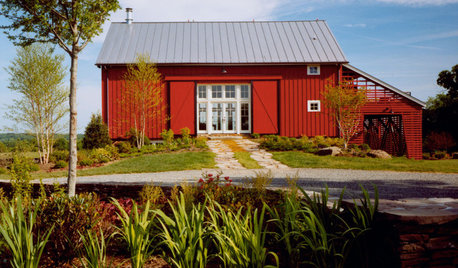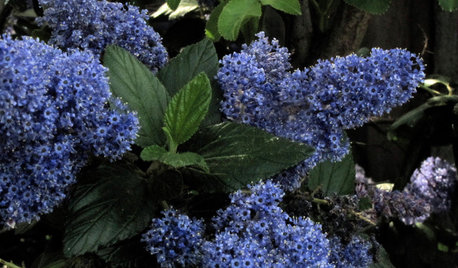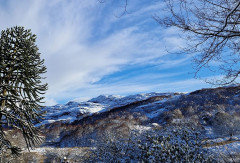Araucaria, March update
41 North (Zone 7a/b, NE, coastal)
last year
last modified: last year
Featured Answer
Sort by:Oldest
Comments (21)
ken_adrian Adrian MI cold Z5
last yearlast modified: last yearsam_md
last yearRelated Discussions
Update: early March flowers
Comments (5)Love the silver Kalanchoe! I found one the other day and started to get it. Wish I had now. That is so lovely. The CA. Poppy photo is just beautiful. Love the Lemons hanging down in the back above all the dainty flowers. Picturesque California Garden! Are those purple daisies Osteospermum? I grew some purple Osteospermum last year. They are grown as an annual here, but this winter was so mild, one survived! :) I haven't seen a Clivia in decades. Gorgeous. We had them growing against the house on the north side with giant white Callas and ferns. Two Golden-Chain Acacias stood out front along the drive. I LOVED those trees! A terra cotta path lead you to the front entryway down steps and onto the Spanish Patio. All sorts of Succulents and cacti grew on either side and then mother had lots of red and pink Geraniums. My favorites were the trailing ivy-like geraniums that hung down the sides of the cutback of the patio. On the east side of the patio, there was an archway where grew a huge 'Albertine' rambler rose. It grew up and over the archway and up onto the roof of our house. It was so vigorous that is practically swallowed that side of the house. It smelled divine. But because it was thorny, my Father had to cut it off the roof of the house. I hated to see it cut back off the roof- it was so beautiful! But then we all had to help Papa repair the roof, and I saw why Albertine had to go! She was damaging the roof. I just LOVED that old Spanish hacienda and the old garden. Your photos brought all my childhood memories back to me.... Love, love, love your garden! Thank you for sharing. ~Annie...See MoreUpdated Drought Outlook Thru March 2012
Comments (6)Lizgyrl, I don't live anywhere close to the east either, and it is discouraging. However, my garden produced great until July last year even in the midst of tough conditions. It just didn't produce as much as it normally does. My mistake was to try to keep it producing in July and August, which was a waste of time, effort and money. This year I'll just expect spring and fall production, and if rain falls in summer, that will be good but I am not counting on a lot of summer rainfall, since the summer rains can be fairly scant even in a normal year. To plan for a drought, I look for short-season vegetable varieties that will have a chance to make a crop before the heat and lack of moisture shut them down in July or August. When you look at our average last frost dates for spring and average first frost dates for fall, it looks like we have a really long growing season here. That's a bit misleading though, because extreme summer heat can shut down the production of most veggies, except for the most heat-tolerant ones like okra, southern peas and melons in the middle of that long growing season. What we really have is several mini-seasons within our theoretically long growing season. In a drought year, it is more like we have a spring growing season and a fall growing season with a couple of hellishly hot months sandwiched in between. You can work around those hot months by planting to get good spring and fall harvests even if mid-summer harvests are poor. For example, if you want to plant green beans in a drought year, it is important to get them into the ground as soon as the soil temps and air temps are warm enough in spring, because once the really hot summer weather arrives, their production drops. So, I choose the most heat-tolerant and drought-tolerant varieties I can find, and I plant as early as possible, and I look for varieties with shorter days-to-maturity numbers. This means I might be planting more bush beans than pole beans since bush beans make a crop faster and for pole beans I'll chose varieties with DTMs in the 50s-70s instead of DTMs in the 70s-90s. It is the same thing with most other crops. However, most varieties of okra, southern peas (blackeyes, pinkeyes, purple hull pinkeyes, xipper, lady, cream and crowder peas), melons, some peppers and some tomatoes will produce well in periods of drought as long as they get adequate moisture, which may or may not be possible but I always figure I can water enough to get something from those veggie plants. A lot depends on how much spring rainfall you get and on whether your area is subject to water restrictions/rationing in the summer months. With watermelons, in a drought year I plant only the small ones, often called refrigerator melons because they are small enough to fit into the fridge easily, because they survive on less water than the varieties that make really large melons. It is a lot easier to get ripe melons from a plant that produces 8 or 10 or 15 lb. melons in a drought year, than from a plant that produces 20 or 40-lb. melons. I'll be posting my veggie Grow List for 2012 today, and it will have some very heat-tolerant and drought-tolerant varieties on it that do better in drought than some of the varieties I usually plant in a wetter year. In order to have better results in a drought year, I pay extra attention to soil preparation in winter and add as much organic matter to the garden beds as I reasonably can. Then, after the plants are up and growing, I mulch them heavily to keep the soil cooler and more moist, and I shade them with shade cloth or old sheets once the real heat kicks in. Even so-called "full sun" plants often do quite well in our climate with only 4 to 6 hours of direct sunlight because our heat and sunlight tend to be quite intense. There's a lot you can do to work around anticipated drought conditions, but if we have another epic drought in 2012 like we had in 2011, then there is only so much you can do to help your plants cope with weather like that. With each thing we like to plant, there's always going to be some varieties that produce better in heat and those are the ones I try to plant in drought years. So, it is more important to plant with your brain than your heart in a year when you're expecting drought, choosing the varieties likely to do best in drought conditions instead of just going with your usual favorites that might require more water and still might not produce as well. With flowers and herbs, I plant fewer in drought years and make the same decisions about varieties---which do best in low-water situations and which ones are the toughest, sturdiest survivors? I guess the big thing about a drought year is that we know we cannot force some things to grow well and produce well in the absence of adequate moisture and in the presence of extreme heat, so we have to garden smarter and probably lower our expectations somewhat. Still, even in a drought year, we can have great harvests. Last year I had the largest potato and onion harvests ever, and about the best lettuce year we've ever had as well. The lettuce was burning up in the heat by the time June arrived. That is fairly typical, though, for lettuce in our climate. Some cool-season crops, like sugar snap peas and broccoli, did not perform as well in 2011 as they usually do because we had too many days in spring when the temps were hitting the 80s and 90s which was too hot for those plants and caused their growth to stall. Still, when the May rains brought us more moderate temps and lots of moisture even those veggie crops produced something, though not as much as usual. Dawn...See MoreUpdate on Rock Hardy Sterling,VA Trachycarpus Palm March 12, 2012
Comments (3)There are many reasons to be skeptical of the claims that this palm has survived temperatures as low as -10 degrees. The palm is growing in a very sheltered location and the claim is a completely unsubstantiated assumption based on an overnight low temperature at Dulles Airport, several miles away in a known cold pocket. (On the same night, the low at National Airport was 5 degrees.) Not even the person who planted and grew it during this period (a friend of mine) claims or believes it ever experienced temperatures that low and has been dismayed to see people who weren't even there making this claim over and over. It's an impressive palm for sure, and probably our area's oldest and tallest windmill palm, but it's unlikely that this palm has ever experienced anything colder than zero degrees (if that). Here is a link that might be useful: More info in a previous discussion...See MoreUPDATE: Snowed in Again swap closes March 1
Comments (6)got my seeds today, someone's envelops did not seal good I have a whole bunch in the bottom of my bag. Other than that love what I got. Guess I'll be having suprise garden...See Moregardengal48 (PNW Z8/9)
last yearfloral_uk z.8/9 SW UK
last yearBillMN-z-2-3-4
last yearlast modified: last yearsam_md
last yeargardengal48 (PNW Z8/9)
last yearEmbothrium
last year41 North (Zone 7a/b, NE, coastal)
last yearbengz6westmd
last yearlast modified: last yearBillMN-z-2-3-4
last year41 North (Zone 7a/b, NE, coastal)
last yearlast modified: last yearBillMN-z-2-3-4
last yearfloral_uk z.8/9 SW UK
last yearlast modified: last year41 North (Zone 7a/b, NE, coastal)
last yearbengz6westmd
last yeardavidrt28 (zone 7)
last yearlast modified: last yearBillMN-z-2-3-4
last yearlast modified: last yearsam_md
last yeardavidrt28 (zone 7)
last year
Related Stories

DECORATING GUIDESCountry Style Gets an Urbane Update
Pledge your allegiance to classic reds, sliding doors and rustic siding to bring an air of country to your modern home
Full Story
HOUZZ TOURSMy Houzz: Elegant DIY Updates for a 1970s Dallas Home
Patiently mastering remodeling skills project by project, a couple transforms their interiors from outdated to truly special
Full Story
LATEST NEWS FOR PROFESSIONALSUpdate to PPP Loan Program Gives Businesses More Flexibility
A new law relaxes rules regarding loan forgiveness and repayment for companies getting aid during the pandemic
Full Story
MONTHLY HOME CHECKLISTSYour March Checklist for a Smooth-Running Home
Prep your home for spring by shedding its winter layers and bringing in nature and fresh colors
Full Story
REGIONAL GARDEN GUIDESCalifornia Gardener's March Checklist
Give natives and tropicals a well-deserved spotlight — plus, discover an easy herb that keeps on giving
Full Story
ECLECTIC HOMESMy Houzz: 1970s Texas Ranch House Gets a Boho Update
Before and after: Graphic tile, black paint and a new open floor plan transform this Austin couple’s live-work home
Full Story
COLORMarch Into Year-Round Chic With 15 Twists on Red, White and Blue
Parade your patriotism and your style sophistication with new looks for a classic color trio. Drumroll, please ...
Full Story
GARDENING GUIDES10 Outdoor Updates for Summer That Won’t Break the Bank
These easy, low-cost ideas can boost your garden style and make your outdoor space even more enjoyable
Full Story
HOUZZ TOURSHouzz Tour: A 1905 Cottage Gets a Major Family Update
Historic Boston meets outdoors Oregon in this expanded California home
Full Story
MONTHLY HOME CHECKLISTSTo-Dos: Your March Home Checklist
Get ready for sunnier days, whether you have an hour or a weekend to spare
Full Story











DeanW45